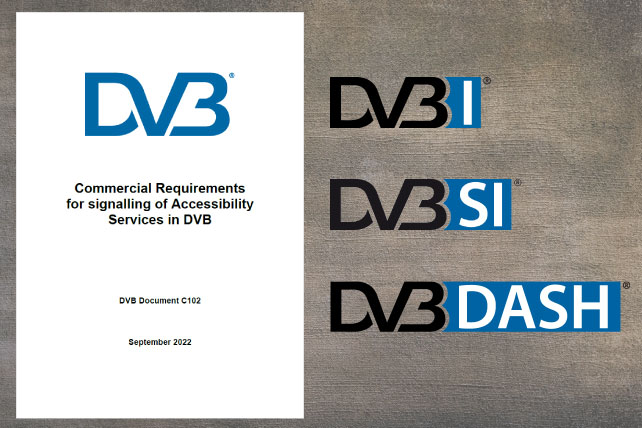
DVB works towards improved handling of accessibility features in HbbTV
The DVB Project has published a set of Commercial Requirements for the extension and revision of some core DVB specifications to support better signalling of accessibility services. The work relates specifically to the HbbTV Accessibility Framework.
The Commercial Requirements, published as DVB BlueBook C102, will guide technical work to update the existing DVB-SI, DVB-I and DVB-DASH specifications. The aim is to ensure that the availability of accessibility features is clearly signalled in all DVB services, to facilitate easy use of such services by end users.
HbbTV Accessibility Framework
The initiative was triggered by recent work within the HbbTV Association on an “Accessibility Framework”. The framework has been created in a context where the operating systems of TV sets have an increasing range of accessibility options, although with inconsistencies across brands and models, while HbbTV also has a comprehensive accessibility toolkit.
The HbbTV Accessibility Framework is designed to enable apps and TV sets to have a constructive dialogue between themselves to decide which will take responsibility for realizing a feature. It also allows rich settings data from the TV settings menus to be available to HbbTV apps.
DVB’s forthcoming work will focus on enabling the signalling to viewers of the availability of additional accessibility services, provided within the related HbbTV app. Their availability would be shown when navigating a DVB-SI or DVB-I based channel list or EPG, with the signalling applying to linear services delivered over both broadcast and DVB-DASH streaming.
The work also aims to enable greater consistency of accessibility services across broadcaster streamed video-on-demand (HbbTV) services, streamed linear services (DVB-DASH), and traditional broadcast services, including consideration of any opportunity to achieve consistency of approach with the HbbTV Accessibility Framework for service provisioning based on terminal capabilities and user preferences.
